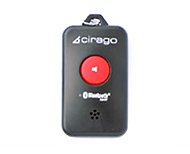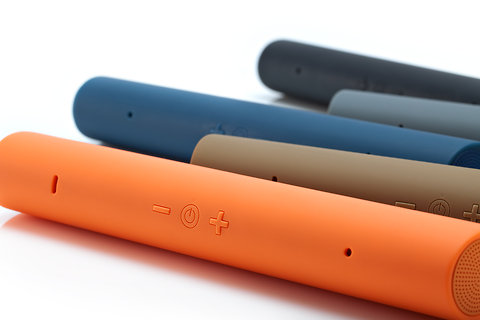A few months back, Microsoft raised a lot of eyebrows by selling its first computer: the Surface tablet. For the same $500 that gets you an iPad, it offers better hardware and more jacks. It has only one drawback: it can’t run any PC software.

The Times’s technology columnist, David Pogue, keeps you on top of the industry in his free, weekly e-mail newsletter.
Sign up |
See SampleOr, more precisely, it can’t run any of the four million standard Windows programs. Instead, it requires a new type of app, a more limited, full-screen, iPaddish sort of app, available only from Microsoft’s online store. And there aren’t many of those apps, although the situation is slowly improving.
The world slavered, however, over Microsoft’s intention to release a second version of the Surface — the Pro — that would, in fact, be a genuine PC, running the real Windows and real Windows apps. Can you imagine how cool that would be? To have a tablet that was also a full-blown PC?
It’s almost here. At the Consumer Electronics Show in Las Vegas, Microsoft didn’t have a booth and didn’t give the usual opening talk (instead, Qualcomm took that slot, embarrassingly and hilariously). But representatives were there, in a hotel room far from the show, giving a few reporters an early look at the Surface Pro.
It’s thicker than the original Surface tablet, just over half an inch thick. It’s heavier: 2 pounds instead of 1.5. And it’s more expensive: $900 with 64 gigabytes of storage, $1,000 with 128.
But you’re looking at an entirely new kind of machine, one with new possibilities. It’s a touch-screen tablet, of iPaddish proportions, that runs desktop software: Photoshop, Quicken, the full Microsoft Office, iTunes (and Apple’s online movie and music stores). Desktop software on a half-inch-thick tablet. That’s a first.
Microsoft has pulled out all the stops to make sure that you’re not disappointed in either of the two functions, tablet or PC. The screen is dazzling: bright, crisp and responsive. It has 1,080 by 1,920 pixels, also known as 1080p high definition. But when you connect it to a TV or external computer monitor, it manages to output an even bigger desktop — 2,550 by 1,440.
That you can use it at home as your main PC is only the first indication that Microsoft intends for this tablet to go head-to-head with actual computers. Another is the speed: it’s fast. Big apps like the Office apps open in just over one second. Programs switch fast and run fast. Gamers will be in O.K. shape, although of course without a dedicated graphics card, the frame rates won’t break any records.
The Pro comes with a hollow plastic stylus, so that you can write, draw and paint on the screen. The concept has one big flaw: you can store the pen temporarily by attaching it magnetically to the tablet’s power jack, but there’s no silo where you can store it for travel. So you’ll probably lose it.
But the drawing experience is fantastic. The pen is pressure-sensitive, so with the right apps, you can create darker lines by bearing down harder, exactly as graphics pros do on Wacom tablets. And you can rest your fist on the glass; only the pen makes marks.
There’s only one USB port on the device — USB 3.0, fortunately (meaning fast). But Microsoft has added a second USB 3.0 jack on the power brick itself. So whenever you’re set up at home or at work, plugged in to get work done, you now have two USB jacks. You can be charging your phone as you work, for example, by plugging it into the power cord. That’s just so smart.
(The fussy magnetic power-cord attaching jack, so frustrating on the Surface tablet, has been improved on the Pro. A stronger magnet makes it click in more easily.)
What really makes the tablet/PC concept sing, of course, is the famous Surface keyboard cover. It attaches and detaches briskly and simply to a magnetic bar on the bottom of the tablet, making the Pro’s conversion from tablet to PC instantaneous. That’s a huge, huge point. You can also flip it around to the back when you’re in tablet mode; the on-screen keyboard appears automatically as needed.
There are two versions of the keyboard cover, actually. There’s one called the Touch Cover, which is no thicker than a piece of cardboard, but the keys don’t actually travel. You can buy this cover, in a choice of colors, with the Surface for $100, or later for $120; Microsoft acknowledges that you won’t be able to type as fast as you can on a real keyboard.
There’s also the Type Cover ($130), with real keys that really move up and down. It’s about a quarter of an inch thick, but you can type on it normally.
The Surface Pro runs Windows 8. Now, as you know, I find Windows 8 an ill-conceived mashup of two different operating systems. There’s the standard Windows desktop, and there’s a new overlay, which I call TileWorld (because Microsoft hasn’t named it) — a colorful land of big, bright, touch-screen tiles.
Because you’ve got two almost completely dissociated operating systems, you wind up with two Web browsers, two Control Panels, two Search mechanisms, two ways of right-clicking. Your own computer now has a split personality.
On the regular $500 Surface tablet, Windows 8 makes no sense at all. (It’s a version called Windows RT.) The Windows desktop is there as a shriveled appendage; it can’t actually run Windows programs (except a modified Microsoft Office), so why is it there?
But on the Pro, the dual operating system is more defensible. You have TileWorld for use in iPad mode, and the Windows desktop for use when you’re in PC mode.
So: should you buy a Surface Pro instead of an ultrathin laptop? Is this a MacBook Air killer?
The question isn’t quite as clear-cut as it seems. The keyboard cover requires a hard, flat surface — so you can’t actually use this “laptop” as a laptop in your lap. The two successful ways to use it are (a) in your hands or lap as a touch-screen tablet, or (b) as a laptop on a table or desk.
It’s not as flexible when it’s in laptop mode, either; you can’t adjust the screen angle. The lower half of the back is a hinged panel, a razor-thin kickstand, held shut magnetically until you pop it out with a fingernail. It props the tablet sturdily upright — but at a fixed angle.
But even if the Surface Pro is not strictly a laptop killer, it nonetheless changes the game. It’s a machine nobody’s built before, and it should get a lot of imaginations whirring.
These are first impressions, mind you, based on a supervised hour of playing in a Microsoft hotel room. For example, it’s anybody’s guess what the battery life will be. (Probably less than for a real laptop, since there’s so little room inside for a beefy battery.) In any case, I’ll write a full review when I get my own Surface Pro to test.
But for now, it looks as if the Surface Pro is, conceptually and practically, a home run. For thousands of people, it will be an ideal mobile companion. It will mean the end of the daily question: “Hmm, should I take my laptop or my iPad?”






















